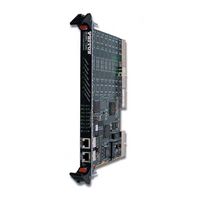
Patton electronics ForeFront 2616RC Manuals
Manuals and User Guides for Patton electronics ForeFront 2616RC. We have 4 Patton electronics ForeFront 2616RC manuals available for free PDF download: Administrator's Reference Manual, User Manual, Getting Started Manual, Specifications
Patton electronics ForeFront 2616RC Administrator's Reference Manual (315 pages)
T1/E1 TDM Digital Access Concentrator (T-DAC); G.SHDSL TDM Digital Access Concentrator (T-DAC); iDSL TDM T-DAC
Brand: Patton electronics
|
Category: Network Hardware
|
Size: 7 MB
Table of Contents
-
-
Introduction37
-
-
-
Introduction49
-
-
DS0 Mapping
56 -
-
Introduction58
-
-
-
-
Mapping Help67
-
-
-
-
Introduction76
-
Ethernet84
-
-
-
Introduction85
-
-
-
-
-
Frame Relay
91 -
-
Introduction93
-
-
-
DLMI Window96
-
-
DLMI Window97
-
DLCI Window98
-
-
-
Introduction103
-
Local Loopback109
-
Line Loopback110
-
Port # Links114
-
-
-
Introduction132
-
Local Loopback137
-
Line Loopback138
-
Port # Links141
-
-
-
Overview151
-
Introduction151
-
-
-
-
-
HDLC Statistics177
-
-
-
Introduction183
-
-
Hyperlinks185
-
IP Parameters185
-
Forwarding185
-
IP Statistics186
-
Out Requests186
-
Total Deliveries186
-
Fragmented OK187
-
Out Discards187
-
-
-
Defined Routes190
-
Advanced192
-
Defined Routes192
-
-
-
TCP Windows Map198
-
Details199
-
TCP Parameters199
-
TCP Statistics199
-
-
-
-
ICMP Parameters203
-
ICMP Statistics204
-
-
-
IP Filtering207
-
-
-
Introduction208
-
-
Defined Filters208
-
-
-
Source IP210
-
Destination IP211
-
Source Port211
-
Destination Port212
-
-
Ppp
215 -
Chapter 14 PPP
218-
Introduction218
-
-
PPP Window220
-
-
-
-
PPP Link Window225
-
LCP Statistics228
-
PPP Statistics228
-
Data Statistics230
-
IP Statistics230
-
-
RIP Version 2234
-
-
-
Introduction235
-
-
Advertisement
Patton electronics ForeFront 2616RC User Manual (80 pages)
T1/E1 TDM-Digital Access Concentrator (T-DAC)
Brand: Patton electronics
|
Category: Network Hardware
|
Size: 3 MB
Table of Contents
-
Introduction
13-
-
-
Altitude16
-
Humidity16
-
Power System16
-
Temperature16
-
-
-
LED Display18
-
-
-
Introduction20
-
RJ-45 Plug25
-
-
-
Introduction32
-
Login Window36
-
Patton electronics ForeFront 2616RC Getting Started Manual (80 pages)
T1/E1 TDM-Digital Access Concentrator (T-DAC)
Brand: Patton electronics
|
Category: Network Hardware
|
Size: 2 MB
Table of Contents
-
Introduction
13-
-
-
Altitude16
-
Humidity16
-
Power System16
-
Temperature16
-
-
-
LED Display18
-
-
-
Introduction20
-
RJ-45 Plug25
-
-
-
Introduction32
-
Login Window36
-
Advertisement
Patton electronics ForeFront 2616RC Specifications (2 pages)
16-Port T1/E1 T-DAC Digital Cross Connect
Brand: Patton electronics
|
Category: Network Hardware
|
Size: 0 MB



